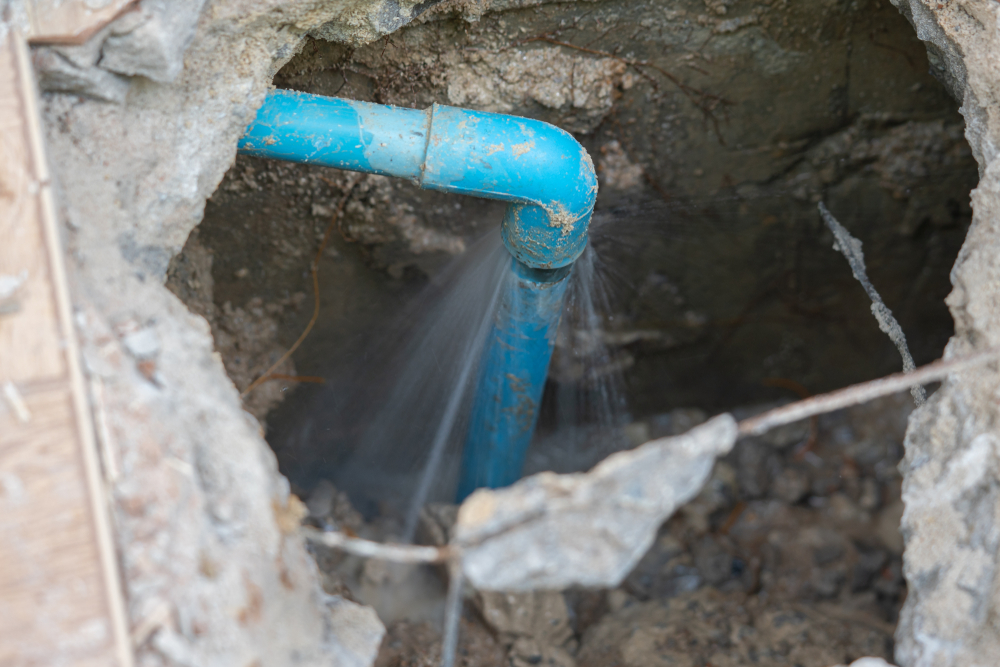6 Ways to Find Surprise Water Leaks in Your House
6 Ways to Find Surprise Water Leaks in Your House
Blog Article
The publisher is making a few good observations relating to Leaking water lines overall in the content on the next paragraphs.

Early discovery of leaking water lines can minimize a prospective disaster. Some tiny water leakages may not be visible.
1. Take A Look At the Water Meter
Every residence has a water meter. Checking it is a surefire way that assists you find leaks. For beginners, turn off all the water resources. Make certain no person will purge, utilize the faucet, shower, run the cleaning machine or dish washer. From there, most likely to the meter and watch if it will certainly alter. Considering that nobody is utilizing it, there should be no motions. If it moves, that suggests a fast-moving leak. Similarly, if you spot no changes, wait an hour or two and also examine back again. This suggests you may have a slow-moving leak that can also be underground.
2. Check Water Consumption
If you spot sudden adjustments, despite your intake being the same, it suggests that you have leakages in your plumbing system. An abrupt spike in your costs suggests a fast-moving leakage.
On the other hand, a constant increase on a monthly basis, despite having the very same behaviors, shows you have a slow leak that's additionally slowly escalating. Call a plumber to completely inspect your property, specifically if you feel a cozy area on your floor with piping below.
3. Do a Food Coloring Test
When it comes to water intake, 30% comes from toilets. If the color in some way infiltrates your dish during that time without flushing, there's a leak between the storage tank as well as dish.
4. Asses Outside Lines
Don't fail to remember to inspect your outdoor water lines too. Should water leak out of the connection, you have a loosened rubber gasket. One small leakage can throw away bunches of water and increase your water bill.
5. Inspect and Evaluate the Situation
House owners should make it a habit to examine under the sink counters and even inside cabinets for any kind of bad odor or mold development. These two red flags suggest a leakage so punctual focus is required. Doing routine examinations, also bi-annually, can save you from a significant problem.
Examine for discolorations as well as weakening as many devices and pipes have a life expectancy. If you presume leaking water lines in your plumbing system, don't wait for it to intensify.
Early discovery of dripping water lines can minimize a potential catastrophe. Some little water leaks may not be visible. Inspecting it is a proven way that aids you discover leaks. One little leakage can throw away bunches of water as well as spike your water expense.
If you believe leaking water lines in your plumbing system, do not wait for it to intensify.
How to Know If Your Home Has a Hidden Leak
Water Meter Reveals Inexplicable Water Usage
If you’d like to test whether or not there’s a leak somewhere in your home, you can do this using your water meter. Here is how to conduct the test:
Don’t use any water in your home for at least 30 minutes; this also means not turning on faucets or water-using appliances.
Go outside, and check your water meter for activity.
If your water meter shows that there was activity, even though no one was using any water, this proves that there is a leak in your home.Visible Mold or Mildew Growth
Leaks behind walls create moist, dark environments that allow mold and mildew to grow and thrive. Eventually, you might see mold growth forming on the wall closest to a hidden leak.
If mold is growing in an area that receives a high amount of moisture, such as a bathroom, it may simply be an indication that better ventilation is needed. However, if you see mold growth on a wall or the ceiling in an area where you would not expect, you probably have a hidden leak.
Musty, Mildew Odor
Sometimes you might not be able to see the mold or mildew that is growing as a result of a leak. However, the smell can give the problem away just as easily. If you catch a whiff of something musty, there’s a good chance that old water is collecting somewhere in your home that you can’t see.
Stained/Warped Walls, Ceilings, or Floors
When your home soaks up water, a variety of red flags can become visible, including ceiling stains, bubbling drywall, warped walls, and sagging floors. While these issues can be caused by excess humidity, they can also be signs that a pipe or plumbing connection has started leaking behind your walls.
Inexplicably High Water Bill
After a while, you get a general sense for what your water bill should be. If you own a pool or sprinkler system, your bill will tend to be higher during summer. However, if you receive a water bill that seems especially high, and you can’t figure out what caused it, then you may have a hidden leak somewhere that’s increasing your bill.
https://www.plumbingjoint.com/blog/2019/july/how-to-know-if-your-home-has-a-hidden-leak/

I discovered that blog posting on Hacks to detect leaks while doing a search on the search engines. Loved our write-up? Please share it. Help others find it. Kudos for your time. Visit again soon.
Report this page